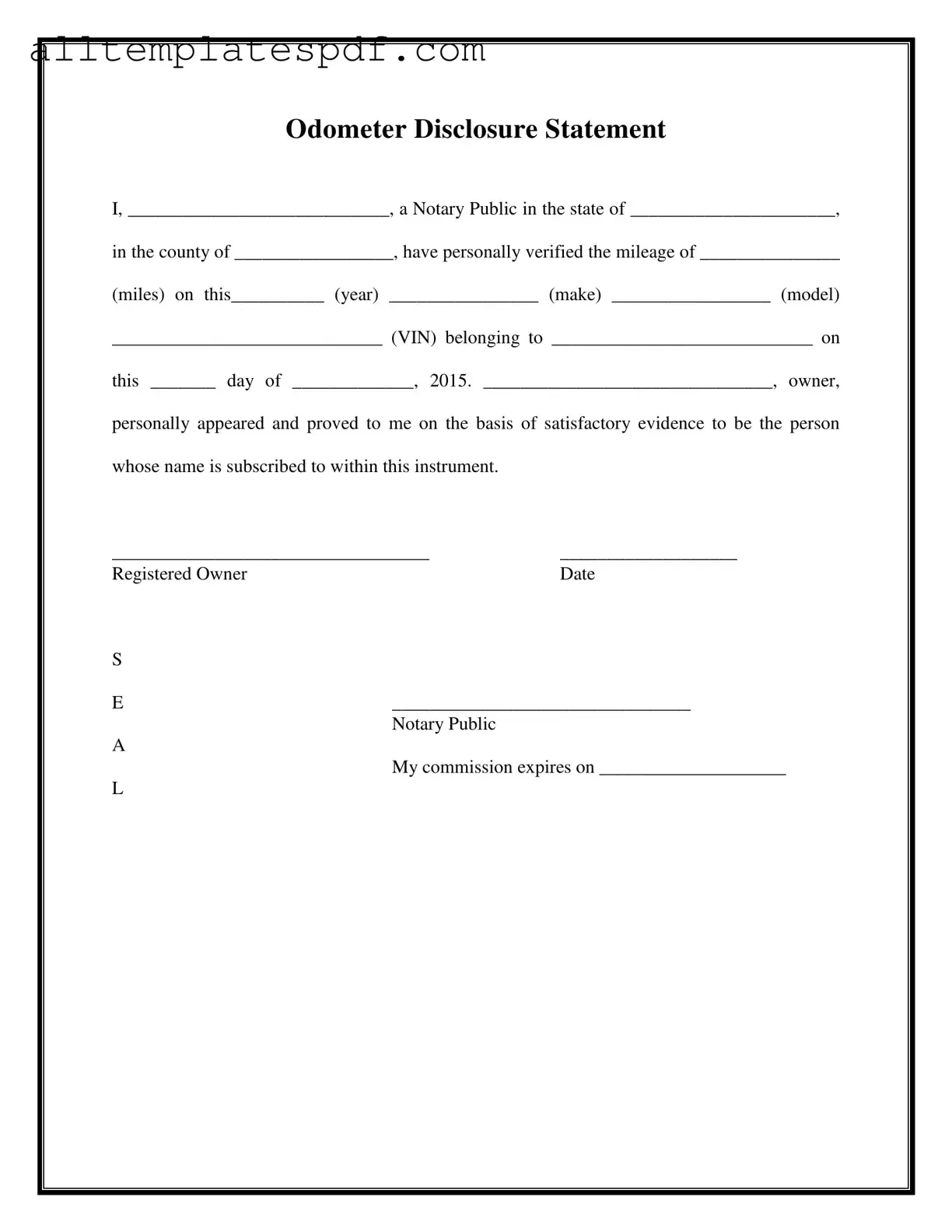When filling out the Notarized Odometer Statement form, many people unknowingly make mistakes that can lead to complications later on. One common error is leaving out critical information. For instance, not providing the correct vehicle identification number (VIN) can create confusion about the vehicle in question. This number is essential for identifying the specific car, so ensure it is accurate and complete.
Another frequent mistake involves misreporting the mileage. It's crucial to double-check the odometer reading before writing it down. If the mileage is incorrect, it can lead to disputes or even legal issues down the line. Always take a moment to verify the number before submitting the form.
People often overlook the importance of signing the document in the right place. The owner’s signature must be present, and it should match the name listed on the form. If the signature is missing or doesn't match, the notarization may not hold up, causing delays in the transaction.
Additionally, some individuals fail to include the date of the transaction. This date is vital for establishing when the mileage was verified. Without it, the document may lack credibility. Make sure to fill in the date clearly to avoid any misunderstandings.
Another mistake is not providing the correct state and county where the notarization takes place. This information is necessary for the notary to validate the document properly. If this section is left blank or filled in incorrectly, it can lead to complications when the form is used.
People sometimes forget to have the document notarized before submitting it. The notarization process is what gives the form its legal weight. Skipping this step can render the document invalid, so ensure that a notary public is present to witness the signing.
Lastly, failing to check the expiration date of the notary's commission can be a significant oversight. If the notary's commission has expired, the notarization may not be valid. Always confirm that the notary is authorized to perform the service before proceeding.
